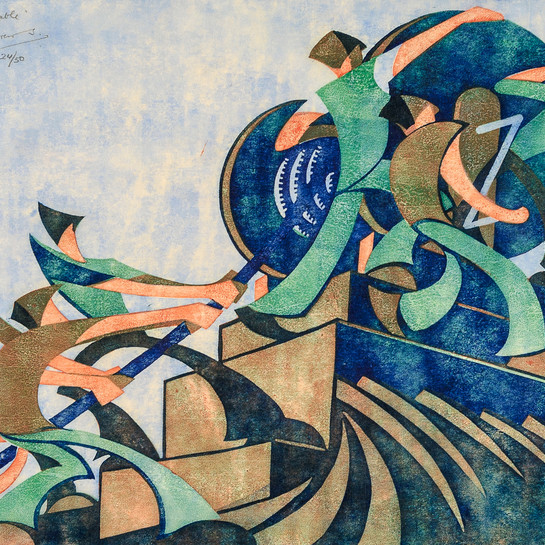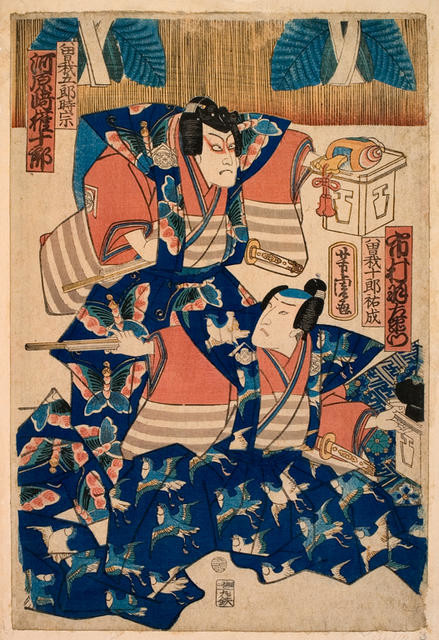Yoshitora Utagawa
Japan, b.c. 1840, d.1880
Actors Ichikawa Uzaemon as Soga Jûrô Sukenari, and Kawarasaki Gonjūrō as Soga Gorô Tokimune, in Soga Kyodai no Adauchi (Brothers' Revenge)
- 1862
- Woodcut on paper
- Gifted to the Gallery by William E Smith, 2003
- 355 x 250mm
- 2003/117
Tags: Japanese (culture or style), actors (performing artists), animals, birds (animals), blue (color), costume (mode of fashion), fans (costume accessories), hair, insects, mallets (tools), men (male humans), monograms, people (agents), performing artists, stripes, swords, theaters (buildings), words
Bandō Hikosaburō, Ichikawa Uzaemon and Kawarasaki Gonjūrō were leading kabuki actors in Edo, which became Tokyo in 1868 following the restoration of imperial rule. Actors’ performances were routinely celebrated in fine woodcuts, known as ukiyo-e (‘picture of the floating world’) prints. These remarkable works of art were also affordable, used by the rising merchant classes to decorate their homes.Like kabuki actors, Japanese printmakers received highly formalised training from masters whose names they inherited, identifying them with a particular school. Ochiai Yoshiiku (also known as Utagawa Yoshiiku) and Utagawa Yoshitora both belonged to the Utagawa school – one of the largest of the period – founded by Utagawa Toyoharu (c. 1735–1814), whose ukiyo-e prints had first appeared in about 1768.
(Leaving for Work, 2 October 2021 - 1 May 2022)

